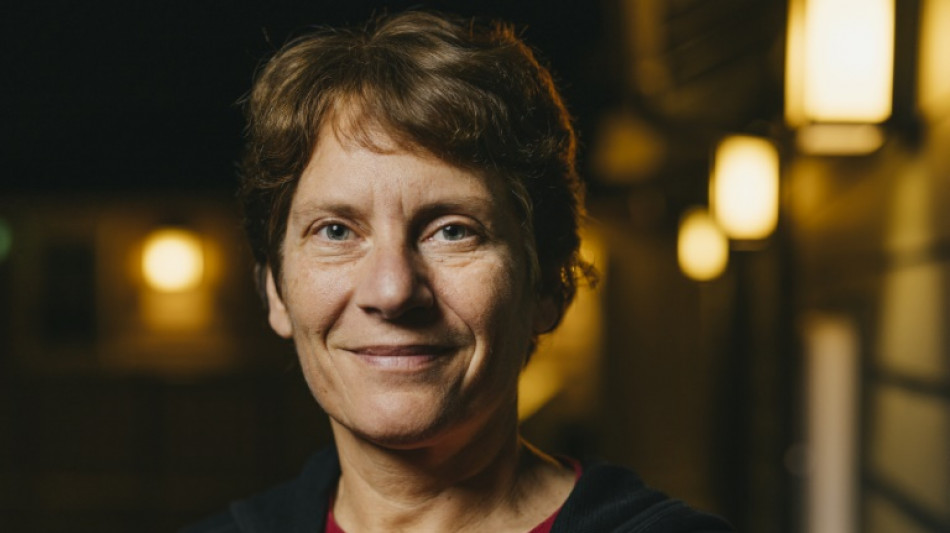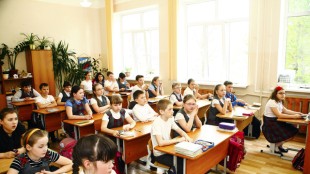
-
 'Starting anew': Indonesians in disaster-struck Sumatra hold Christmas mass
'Starting anew': Indonesians in disaster-struck Sumatra hold Christmas mass
-
Cambodian PM's wife attends funerals of soldiers killed in Thai border clashes

-
 Prime minister hopeful Tarique Rahman arrives in Bangladesh: party
Prime minister hopeful Tarique Rahman arrives in Bangladesh: party
-
Pacific archipelago Palau agrees to take migrants from US

-
 Pope Leo expected to call for peace during first Christmas blessing
Pope Leo expected to call for peace during first Christmas blessing
-
Australia opts for all-pace attack in fourth Ashes Test

-
 'We hold onto one another and keep fighting,' says wife of jailed Istanbul mayor
'We hold onto one another and keep fighting,' says wife of jailed Istanbul mayor
-
North Korea's Kim visits nuclear subs as Putin hails 'invincible' bond

-
 Trump takes Christmas Eve shot at 'radical left scum'
Trump takes Christmas Eve shot at 'radical left scum'
-
Leo XIV celebrates first Christmas as pope

-
 Diallo and Mahrez strike at AFCON as Ivory Coast, Algeria win
Diallo and Mahrez strike at AFCON as Ivory Coast, Algeria win
-
'At your service!' Nasry Asfura becomes Honduran president-elect

-
 Trump-backed Nasry Asfura declared winner of Honduras presidency
Trump-backed Nasry Asfura declared winner of Honduras presidency
-
Diallo strikes to give AFCON holders Ivory Coast winning start

-
 Spurs captain Romero facing increased ban after Liverpool red card
Spurs captain Romero facing increased ban after Liverpool red card
-
Bolivian miners protest elimination of fuel subsidies

-
 A lack of respect? African football bows to pressure with AFCON change
A lack of respect? African football bows to pressure with AFCON change
-
Trump says comedian Colbert should be 'put to sleep'

-
 Mahrez leads Algeria to AFCON cruise against Sudan
Mahrez leads Algeria to AFCON cruise against Sudan
-
Southern California braces for devastating Christmas storm

-
 Amorim wants Man Utd players to cover 'irreplaceable' Fernandes
Amorim wants Man Utd players to cover 'irreplaceable' Fernandes
-
First Bond game in a decade hit by two-month delay

-
 Brazil's imprisoned Bolsonaro hospitalized ahead of surgery
Brazil's imprisoned Bolsonaro hospitalized ahead of surgery
-
Serbia court drops case against ex-minister over train station disaster

-
 Investors watching for Santa rally in thin pre-Christmas trade
Investors watching for Santa rally in thin pre-Christmas trade
-
David Sacks: Trump's AI power broker

-
 Delap and Estevao in line for Chelsea return against Aston Villa
Delap and Estevao in line for Chelsea return against Aston Villa
-
Why metal prices are soaring to record highs

-
 Stocks tepid in thin pre-Christmas trade
Stocks tepid in thin pre-Christmas trade
-
UN experts slam US blockade on Venezuela

-
 Bethlehem celebrates first festive Christmas since Gaza war
Bethlehem celebrates first festive Christmas since Gaza war
-
Set-piece weakness costing Liverpool dear, says Slot

-
 Two police killed in explosion in Moscow
Two police killed in explosion in Moscow
-
EU 'strongly condemns' US sanctions against five Europeans

-
 Arsenal's Kepa Arrizabalaga eager for more League Cup heroics against Che;sea
Arsenal's Kepa Arrizabalaga eager for more League Cup heroics against Che;sea
-
Thailand-Cambodia border talks proceed after venue row

-
 Kosovo, Serbia 'need to normalise' relations: Kosovo PM to AFP
Kosovo, Serbia 'need to normalise' relations: Kosovo PM to AFP
-
Newcastle boss Howe takes no comfort from recent Man Utd record

-
 Frank warns squad to be 'grown-up' as Spurs players get Christmas Day off
Frank warns squad to be 'grown-up' as Spurs players get Christmas Day off
-
Rome pushes Meta to allow other AIs on WhatsApp

-
 Black box recovered from Libyan general's crashed plane
Black box recovered from Libyan general's crashed plane
-
Festive lights, security tight for Christmas in Damascus

-
 Zelensky reveals US-Ukraine plan to end Russian war, key questions remain
Zelensky reveals US-Ukraine plan to end Russian war, key questions remain
-
El Salvador defends mega-prison key to Trump deportations

-
 Stranger Things set for final bow: five things to know
Stranger Things set for final bow: five things to know
-
Grief, trauma weigh on survivors of catastrophic Hong Kong fire

-
 Asian markets mixed after US growth data fuels Wall St record
Asian markets mixed after US growth data fuels Wall St record
-
Stokes says England player welfare his main priority

-
 Australia's Lyon determined to bounce back after surgery
Australia's Lyon determined to bounce back after surgery
-
Stokes says England players' welfare his main priority


Nobel winner's ingenious chemistry could lead to cancer breakthroughs
"All kinds of crazy things" is how Carolyn Bertozzi, a 2022 Nobel laureate, describes her life's work. Actually performing "chemistry in cells and in people."
When she started her research in 1997, the Stanford professor was aiming only to observe the evolution of certain molecules on the surface of cancer cells.
Today, thanks to her discoveries, at least two companies -- including one she co-founded -- are developing innovative cancer treatments.
The multitude of applications made possible by her findings are impressive: delivering treatments with extreme precision, understanding better how drugs act inside the body, visualizing certain bacteria, to name a few.
"I can't even really enumerate them. The vast majority of those applications I would never have foreseen," she told AFP in an interview.
The Nobel Prize committee recognized Bertozzi's pioneering advances on Wednesday, making her only the eighth woman to win the chemistry prize, at just 55 years old.
- Lego pieces -
Her journey began when she found she had a passion for organic chemistry, while taking pre-medicine courses at Harvard.
The subject is notoriously -- many say fiendishly -- difficult, but she credits an "amazing professor," the late David Evans, for bringing it to life -- and changing the course of her life.
"I said, forget the med school thing. I'm going to be a chemist," said Bertozzi, whose sister is a professor of applied mathematics, and father a retired professor of physics.
After completing her post-doctorate and joining the faculty at UC Berkeley, she wanted to take a closer look at glycans: complex carbohydrates, or sugars, located on the surface of cells, which "go through structural changes" when they become cancerous.
At the time, "there was no tool to image sugars, like in a microscope, for example," she said.
She had an idea that would require two chemical substances that fit together perfectly, like pieces of lego.
The first lego is fed to cells via a sugar. The cell metabolizes it and places it on the tip of the glycan. The second piece of lego, a fluorescent molecule, is injected into the body.
The two lego pieces click together, and voila: hidden glycans reveal themselves under a microscope.
This technique is inspired by "click chemistry" developed independently by Denmark's Morten Meldal and American Barry Sharpless -- Bertozzi's co-winners. But their discoveries relied on using copper as a catalyst, which is toxic to the body.
One of Bertozzi's great leaps was achieving the same type of ultra-efficient reaction without copper.
The other tour de force: making it all happen without wreaking havoc with other processes in the body.
"The beauty of it is that you can take the two Legos and click them together, even if they're surrounded by millions of other very similar plastic toys," she explained.
She coined the term "bioorthogonal chemistry," meaning a reaction that doesn't interfere with other biochemical processes. Perfecting the technique took 10 years.
- 'Cycle of science' -
Researchers are now leveraging these breakthroughs to develop cancer treatments.
Glycans on cancer cells "are able to hide the cancer cell from the immune system -- and so your body can't fight it, it can't see it," she explains.
Using bioorthogonal chemistry, "we made a new type of medicine, which basically acts like a lawnmower," says Bertozzi.
The first lego attaches to the cancer cell's surface, and the second, which clips onto it, is equipped with an enzyme that "mows off the sugars as if they're just grass, it cuts the grass and the sugars fall off," she says with a smile.
The drug is currently being tested in the early stages of a clinical trial.
Another company is seeking to use bioorthogonal chemistry to better target cancer treatment. The first lego piece is injected into a tumor, then a second, which carries the drug, attaches itself and acts only on its target.
"So that allows the oncologist to treat the tumor and kill the tumor without exposing the person's entire body to a toxic chemical," she says.
"What the future holds is hopefully an impact in human health," says Bertozzi. "But the people who decide that more so than myself, are the students and postdocs that join my lab."
Hundreds of them, current and former, filled her email box with messages of congratulations this morning.
"That really is the cycle of science -- it's being mentored and then mentoring" she adds. And "mentoring students gives you an opportunity to amplify the impact of your science."
T.Ward--AMWN

